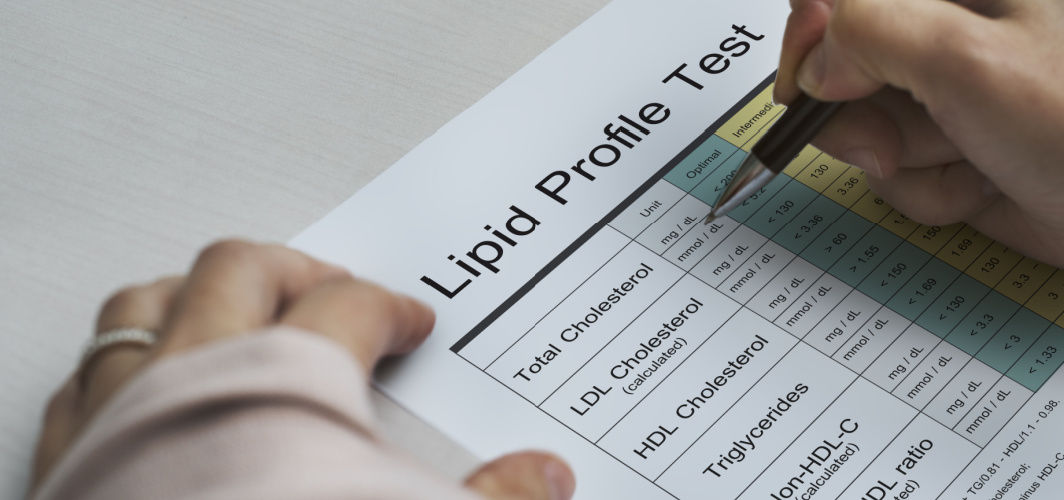Heart Conditions
What Does A Lipid Profile Test Indicate?
5 min read
By Apollo 24|7, Published on - 31 July 2023
Share this article
0
0 like

High cholesterol levels often show no signs in the body, unless they accumulate in major blood vessels, resulting in a blockage. Hence, to monitor the risk factors associated with heart diseases, medical professionals often recommend a lipid profile test. This test provides valuable insights into an individual's lipid levels and aids in evaluating their overall cardiovascular health.
Lipids and Their Role in the Body
- Structural Components: Lipids are integral components of cell membranes, providing structural integrity and stability. They help maintain the fluidity and flexibility of cell membranes, allowing for proper cellular communication and function.
- Energy Source: Lipids serve as a concentrated energy source in the body. When broken down, they yield more energy compared to carbohydrates and proteins. The stored energy is used during periods, fasting or in case of increased energy demands.
- Metabolic Processes: Lipids are involved in the synthesis and breakdown of hormones, including steroid hormones, which regulate numerous physiological functions. Lipids help in the production of bile acids, which are necessary for the digestion of dietary fats.
- Absorption of Fat-Soluble Vitamins: Lipids help in the absorption and transportation of vitamins like vitamins A, D, E and K. Lipids helps in the absorption of these vitamins from the digestive tract.
What is a Lipid Profile Test?
A lipid profile test is a blood test that examines the levels of different lipids in the bloodstream of a person’s body. It includes measurements of total cholesterol, which comprises both LDL cholesterol (also known as bad cholesterol) and HDL cholesterol (also known as good cholesterol). Additionally, the test also measures the triglyceride levels in the body, which is a type of lipid associated with heart disease risk.
By analysing these lipid components, doctors can gain insights into an individual's lipid status and make informed recommendations to ensure optimal cardiovascular health.
What is Lipid Test Used for?
By measuring various lipid components, doctors can assess the presence of abnormalities that may contribute to cardiovascular events.
1. Identifying Abnormalities
The lipid profile test identifies abnormal lipid levels, such as high LDL cholesterol, and triglycerides or low HDL cholesterol in the blood, all of which may indicate an increased cardiovascular risk.
2. Tailoring Management Strategies
Lipid profile test results help doctors prepare relevant management strategies to reduce cardiovascular risk. The management plan may include changing dietary habits, quitting smoking and including exercise in the daily routine to balance the lipid levels and to mitigate the risk of any heart disease.
3. Monitoring Treatment Efficacy
The lipid profile test monitors treatment efficacy in individuals with heart disease or high risk. Regular assessments help determine if interventions (medications or lifestyle changes) effectively manage lipid abnormalities and reduce cardiovascular events. Treatment plans can be adjusted based on results to optimise outcomes and improve cardiovascular health.
When to Get a Lipid Profile Test?
The timing for a lipid profile test varies based on factors like age, family history, and medical conditions.
Generally, a baseline test between ages 20 and 30 is recommended. Various factors like heart disease, obesity, excessive smoking, and family history can influence the need for testing at an early stage. It's important to approach a healthcare professional to understand the need for lipid tests, their importance and an individual’s risk of heart disease.
Preparation for Lipid Profile Test
Accurate results for a lipid profile test require specific preparations. Typically, fasting is recommended for 12-14 hours before the test. Avoiding food and beverages will help determine proper test results, however, water can be taken.
By fasting, potential interference from recent food intake is minimised, ensuring an accurate assessment of lipid levels.
Understanding Lipid Profile Test
A lipid profile test provides detailed information about an individual's lipid profile normal range and helps in evaluating their cardiovascular health. The test results are interpreted by analysing the following components:
- Total Cholesterol: The total measurement of cholesterol in a person’s body will include the levels of both HDL and LDL levels. This measurement indicates the amount of cholesterol present in the bloodstream. The normal range is below 200 mg/dL.
- LDL Cholesterol: LDL cholesterol is also referred to as “bad cholesterol”. An increase in levels of LDL cholesterol can lead to the buildup of plaque in the arteries that can further raise the risk of heart disease. The normal range is between 70 to 130 mg/dL.
- HDL Cholesterol: It is also known as “good cholesterol” and high levels of HDL cholesterol in the body are beneficial. This is because it helps in removing excess cholesterol from the bloodstream, thereby reducing the risk of heart disease. The normal range is between 40 to 60 mg/dL.
- Triglycerides: Increased levels of triglycerides can lead to the risk of heart disease. It is influenced by a person’s diet, alcohol consumption, obesity and other medications. The normal range is 10 to 150 mg/dL.
Interpreting the lipid profile test results in conjunction with an individual's medical history, lifestyle factors, and other risk assessments helps doctors determine the appropriate course of action, such as lifestyle modifications, medication, or further testing.
Conclusion
Regular lipid profile tests are crucial for assessing cardiovascular health and identifying potential risks for heart disease. By understanding the purpose, timing, and preparation for this test, individuals can take proactive steps towards maintaining a healthy lipid profile and reducing their risk of heart-related complications.
FAQs
Q. What is the recommended frequency for getting a lipid profile test?
The frequency of lipid profile tests depends on several factors, including age, family history, and existing medical conditions. In general, it is recommended to get a lipid profile done every year if you’re otherwise healthy and disease-free.
Q. Can I drink water before a lipid profile test?
Drinking water before a lipid profile test does not impact the accuracy of the results. However, it is important to avoid fast food and carbonated beverages during the recommended fasting period.
Q. What can one do to improve lipid levels?
Following a proper diet, exercising, avoiding smoking, reducing alcohol consumption, and taking less stress can help in balancing lipid levels.
Q. Are there any medications that can manage lipid levels?
Statins are mainly prescribed to reduce cholesterol levels in the body. However, medications should only be taken if advised by a healthcare provider.
Medically reviewed by Dr Sonia Bhatt
Heart Conditions
Consult Top Cardiologists
View AllLeave Comment
Recommended for you

Heart Conditions
Signs Of Heart Problems To Look Out For During Winters
Not all signs of heart problems are as evident as chest pain, and there are other subtle symptoms that can be early warning signs.

Heart Conditions
Pregnancy and High Blood Pressure: What Are the Risks?
Recent studies have shown that women suffering from hypertensive disorders during pregnancy are more likely to experience cognitive impairment later in life.

Heart Conditions
6 Eating Tips for Better Heart-health
Choosing a healthy diet, maintaining an optimal weight, doing regular physical exercise, and quitting smoking can significantly reduce the risk of heart diseases.
Subscribe
Sign up for our free Health Library Daily Newsletter
Get doctor-approved health tips, news, and more.
Visual Stories

Can Processed Meat Increase the Risk of Chronic Diseases?
Tap to continue exploring
Recommended for you

Heart Conditions
Signs Of Heart Problems To Look Out For During Winters
Not all signs of heart problems are as evident as chest pain, and there are other subtle symptoms that can be early warning signs.

Heart Conditions
Pregnancy and High Blood Pressure: What Are the Risks?
Recent studies have shown that women suffering from hypertensive disorders during pregnancy are more likely to experience cognitive impairment later in life.

Heart Conditions
6 Eating Tips for Better Heart-health
Choosing a healthy diet, maintaining an optimal weight, doing regular physical exercise, and quitting smoking can significantly reduce the risk of heart diseases.